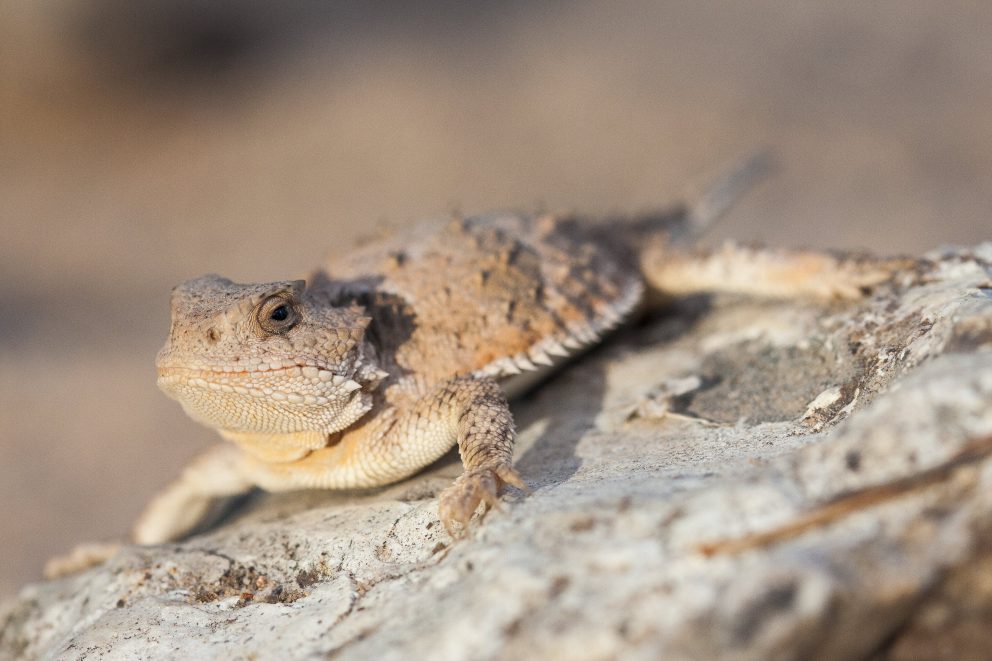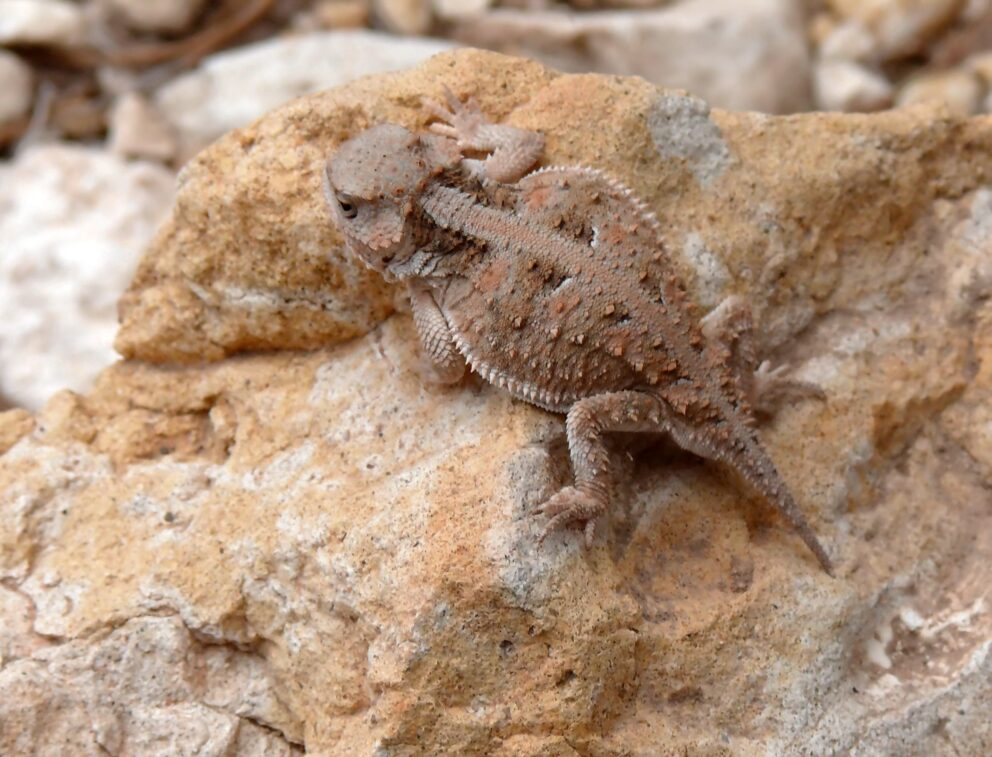- SCIENTIFIC NAME
- Phrynosoma hernandesi
- CLASSIFICATION
- Reptile
- LIFE SPAN
- 5-8 Years
- STATE CONSERVATION STATUS
-
- Priority Species
- Unprotected
- FEDERAL CONSERVATION STATUS
- Least Concern
- GAME STATUS
- Non-Game
- Washoe
- Humboldt
- Pershing
- Churchill
- Mineral
- Lyon
- Douglas
- Carson City
- Storey
- Elko
- Lander
- Eureka
- White Pine
- Esmeralda
- Nye
- Lincoln
- Clark
Habitat & Range
The Greater Short-horned Lizard’s range extends from semiarid plains to high mountains. They occupy a wide variety of habitats including sagebrush, open pinyon-juniper, pine-spruce, and spruce-fir forests. They prefer areas with looser soils as well. In Nevada, they are found in the Northwestern part of the state.
- Cold desert shrubland and sagebrush
- Grasslands
- Pinyon juniper forests
Threats
- Habitat Degradation
- Habitat Loss
Natural History
The Greater Short-horned Lizard eats primarily ants, but their diet is more varied than other horned lizards. They will also eat beetles, bees, and other ground-dwelling insects. They are ambush predators and use their camouflage to surprise prey.
The Greater Short-horned Lizard is more cold-tolerant than other horned lizards. Because they live at higher elevations, they have very short breeding seasons. Females give live birth to up to 16 babies. There is no parental care, and babies will quickly disperse after birth.
These lizards use their camouflage to avoid predators as well as to catch prey. Common predators for them are snakes, other, lizards, birds of prey, and mammals. If noticed and pursued by a predator they will try to puff themselves up to make them seem bigger and harder to eat.
Fun Facts














